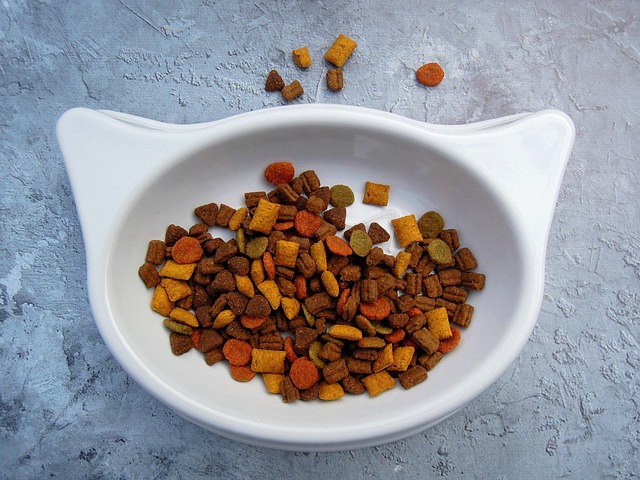Choosing the Right Dry Cat Food: A Complete Guide to Nutrition and Types
Choosing the right dry cat food means balancing nutrition, taste, and your cat’s specific needs. Whether you’re shopping for a kitten, a senior cat, or one with sensitivities, discover how to find formulas that support health, hydration, and happy mealtimes.

Understanding Different Types of Dry Cat Food
Dry cat food comes in several distinct categories designed to meet specific feline needs. Standard maintenance formulas provide balanced nutrition for adult cats with normal activity levels. Age-specific varieties include kitten formulas with extra protein and calories for growth, adult maintenance formulas for prime years, and senior formulas with adjusted nutrients for aging cats. Special-needs formulas address health concerns like weight management, hairball control, or sensitive digestion. Indoor cat formulas typically contain fewer calories and more fiber to accommodate less active lifestyles. Grain-free options substitute alternative carbohydrates like potatoes or peas for cats with sensitivities, though they’re not necessary for all cats.
Benefits of High Protein Dry Cat Food
High protein dry cat food aligns closely with a cat’s natural dietary needs as obligate carnivores. These formulations typically contain 35-50% protein compared to standard formulas’ 25-30%, better mimicking a cat’s evolutionary diet. The elevated protein content supports muscle maintenance, especially important for active cats and seniors fighting muscle wasting. Many cat owners report improved coat condition and skin health with higher protein diets, as amino acids serve as building blocks for these tissues. These formulas often contain less filler ingredients and carbohydrates, potentially beneficial for weight management and blood sugar regulation. However, cats with certain kidney conditions may need more moderate protein levels, making veterinary consultation important before switching.
How to Read Dry Cat Food Labels
Interpreting cat food labels correctly helps you make educated choices about your cat’s nutrition. The ingredient list ranks contents by weight, with meat ideally appearing first—look for named sources like “chicken” rather than vague terms like “meat meal.” The guaranteed analysis panel shows minimum percentages of protein and fat plus maximum percentages of fiber and moisture, allowing for nutritional comparison between products. AAFCO nutritional adequacy statements indicate whether the food provides complete and balanced nutrition for specific life stages. Serving size recommendations offer starting points but may need adjustment based on your individual cat’s metabolism and activity level. Be wary of marketing terms like “natural” or “premium,” which lack standardized definitions and regulatory oversight.
Addressing Special Dietary Needs with Dry Cat Food
Many cats develop specific dietary requirements throughout their lives that specialized dry foods can address. Weight management formulas contain fewer calories per cup while maintaining satisfying volume through increased fiber content. Prescription diets formulated by veterinary nutritionists target specific health conditions like urinary tract health, kidney disease, or diabetes management. Limited ingredient diets (LIDs) contain fewer components to help identify and manage food allergies or sensitivities. Senior-specific formulas often include supplements like glucosamine and chondroitin for joint health, along with easily digestible proteins. When transitioning to a special diet, gradually mix increasing amounts of the new food with the old over 7-10 days to prevent digestive upset.
Comparing Popular High Protein Dry Cat Food Brands
When shopping for high-protein options, quality varies significantly between brands in terms of protein sources, supplemental ingredients, and value. The table below compares some widely available options:
| Brand & Formula | Protein Content | Primary Protein Sources | Notable Features | Approximate Cost |
|---|---|---|---|---|
| Orijen Original | 40% | Fresh chicken, turkey, whole fish, eggs | Freeze-dried liver coating, 85% animal ingredients | $4.50-5.00/lb |
| Purina Pro Plan True Nature | 40% | Chicken, chicken meal, beef fat | Added probiotics, no artificial colors | $2.20-2.75/lb |
| Blue Buffalo Wilderness | 38% | Deboned chicken, chicken meal, fish meal | LifeSource Bits with antioxidants, grain-free | $2.50-3.25/lb |
| Wellness CORE | 37% | Deboned turkey, turkey meal, chicken meal | Probiotic coating, grain-free recipe | $3.00-3.75/lb |
| Iams ProActive Health High Protein | 32% | Chicken, chicken by-product meal | Added L-carnitine for metabolism support | $1.20-1.50/lb |
Prices, rates, or cost estimates mentioned in this article are based on the latest available information but may change over time. Independent research is advised before making financial decisions.
Transitioning and Storage Tips for Dry Cat Food
Proper transition and storage practices maximize freshness and palatability while preventing health issues. When switching brands or formulas, introduce the new food gradually over 7-10 days, starting with 25% new mixed with 75% old and gradually adjusting proportions. Store open bags in airtight containers in cool, dry locations away from sunlight, which can degrade nutrients and cause fats to turn rancid. Note expiration dates and batch numbers in case of recalls, and generally use within 6 weeks of opening for optimal freshness. Some cats prefer room temperature food rather than cold from storage—adding a small amount of warm water can enhance aroma and appeal for picky eaters, though any moistened food should be consumed promptly to prevent bacterial growth.
Selecting the right dry cat food involves balancing nutritional science with your individual cat’s preferences and health needs. By understanding ingredient quality, protein content, and specialized formulations, you can make informed choices that support your feline companion’s wellbeing throughout all life stages. When in doubt, consult your veterinarian, who can provide tailored recommendations based on your cat’s unique health profile and nutritional requirements.




